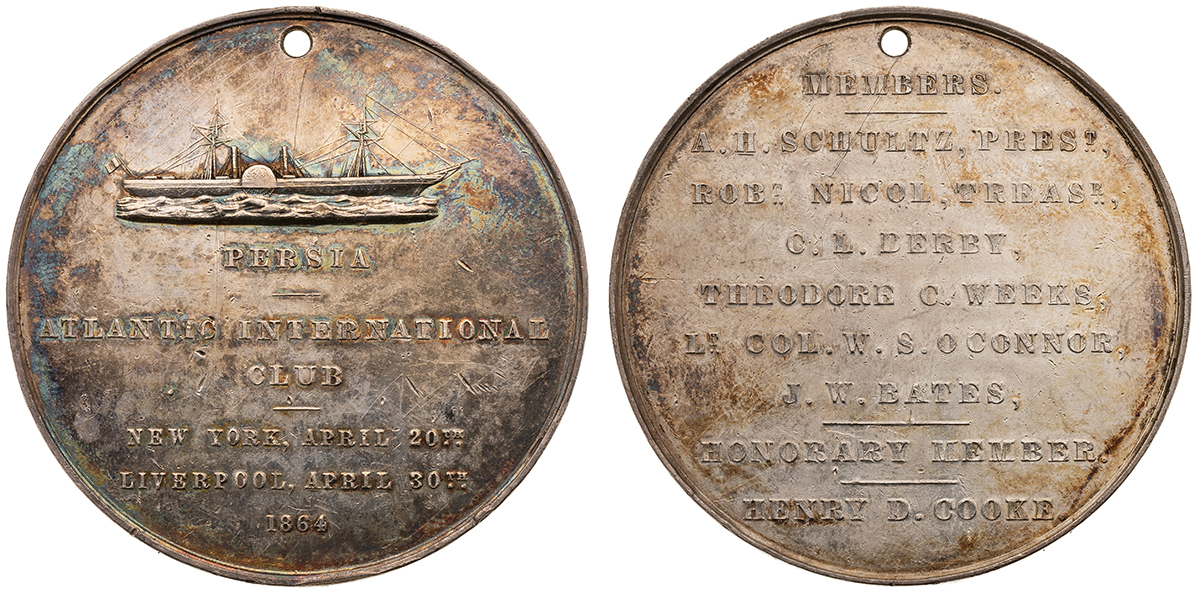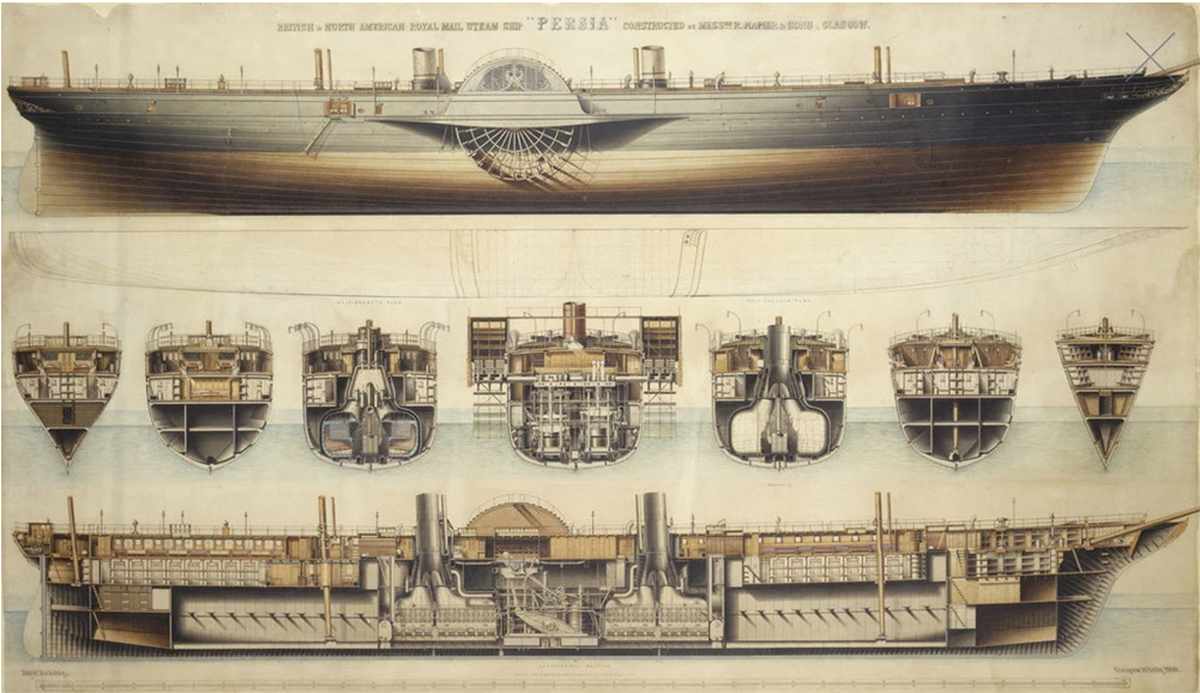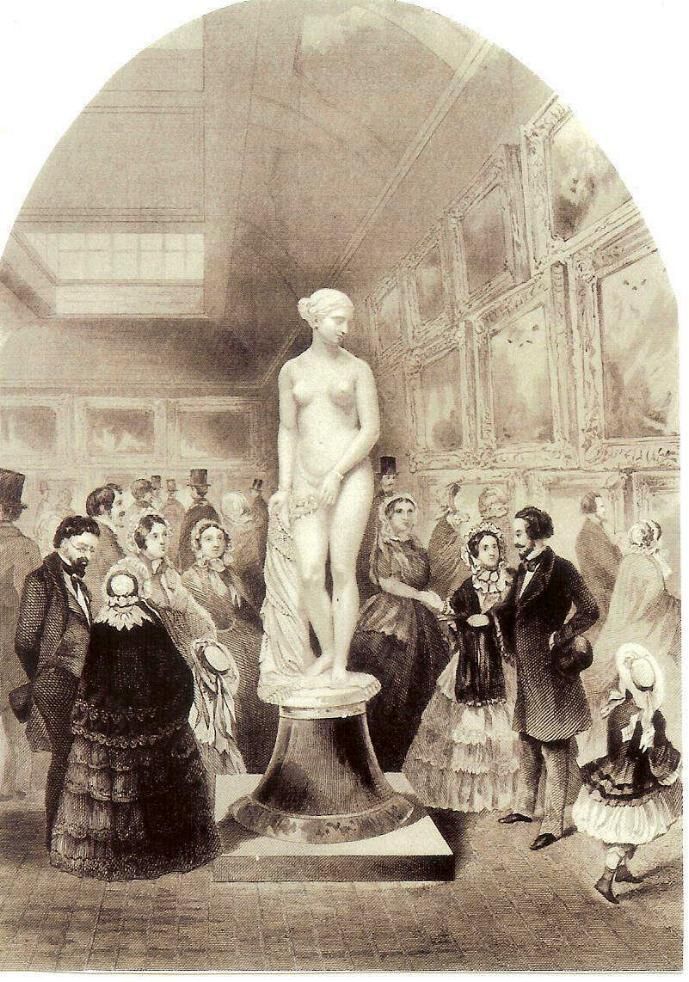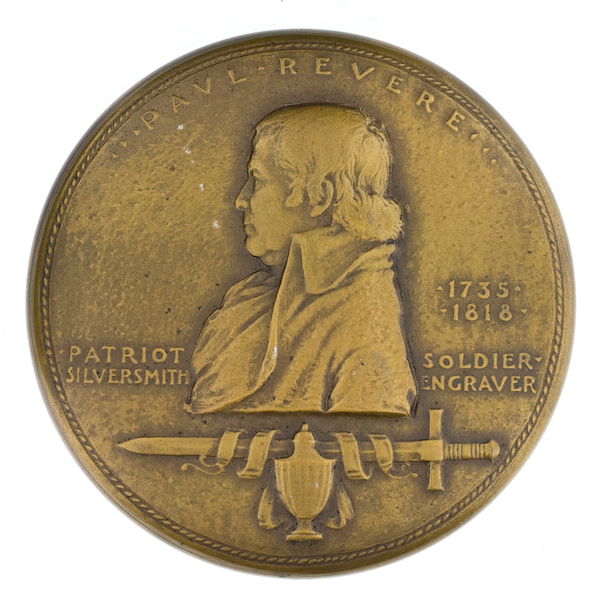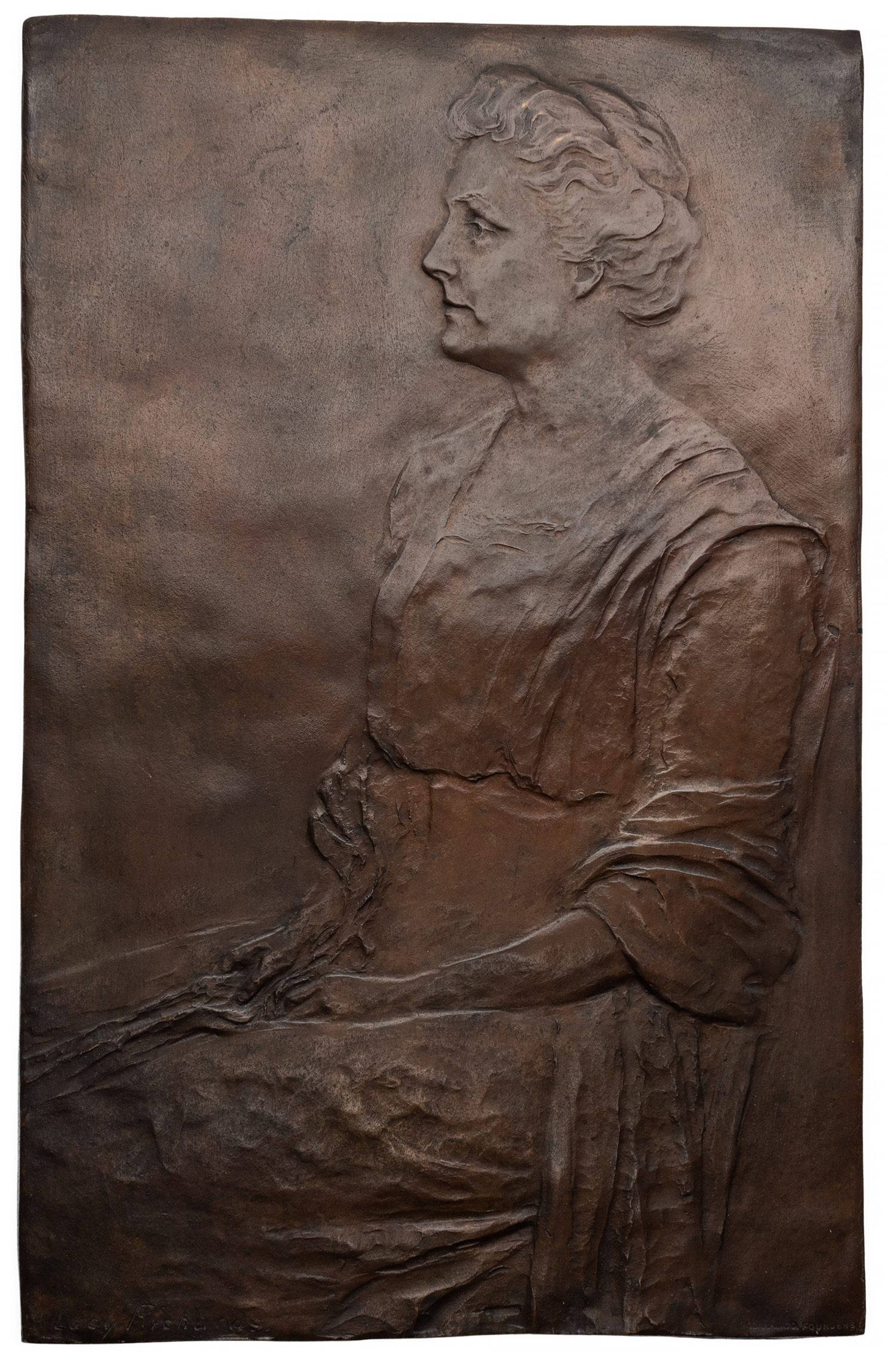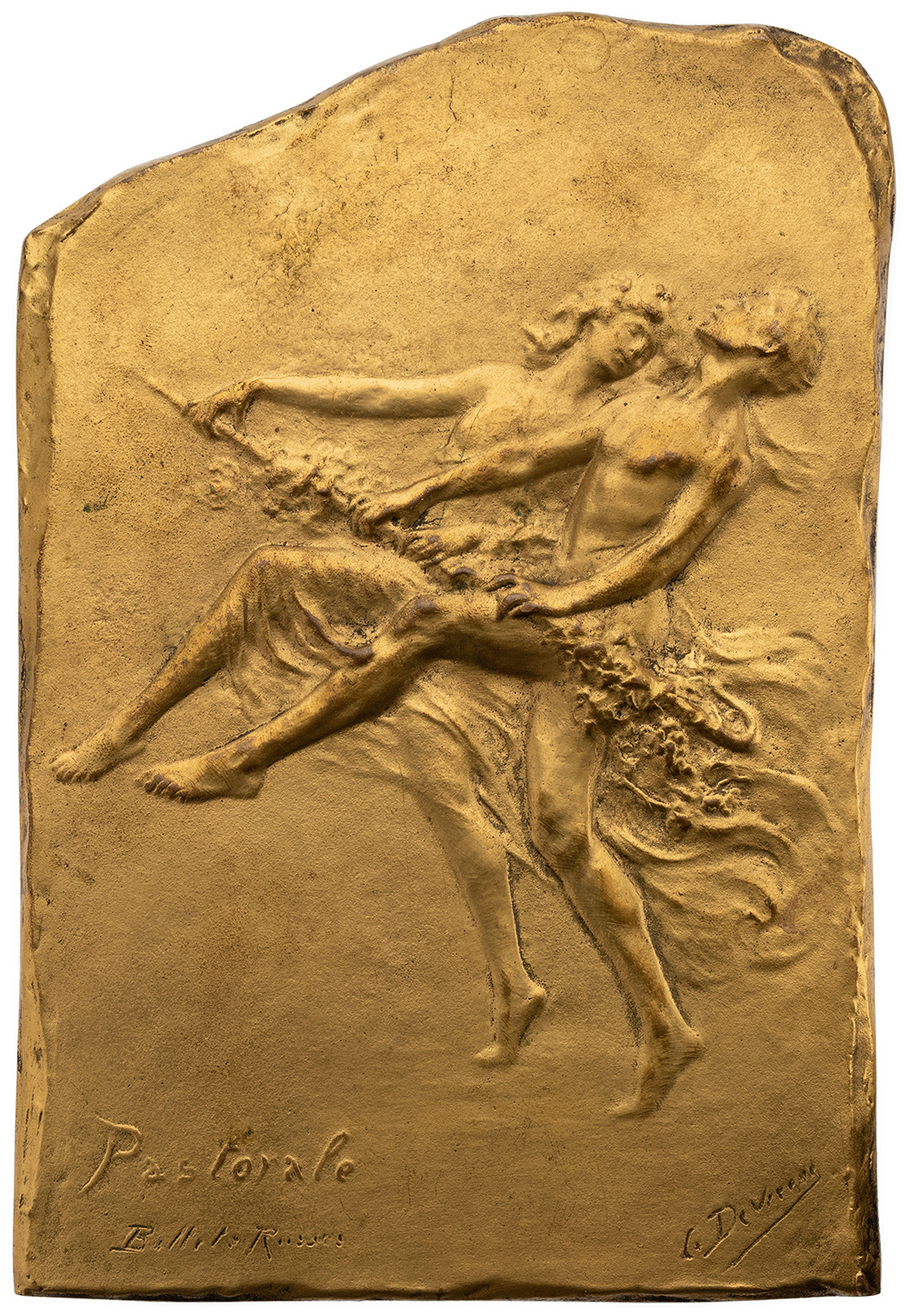The Atlantic International Club, 1864
Among the more unusual and curious objects in the ANS’s collection is a silver medal (ANS 1967.225.23) 56.8 mm in diameter that was donated to the Society, along with ca. 3,000 other medals, in 1967 by the Wadsworth Athenaeum, which had received the medals as a bequest from J. Coolidge Hills in the 1920s. The obverse of the medal depicts the paddlewheel steamship RMS Persia and is inscribed “The Atlantic International Club” along with the dates of a voyage from New York City to Liverpool between April 20th and 30th, 1864. The reverse of the medal lists the “Members” of the Club including A.H. Schultz, Pres., Robt. Nicol, Treas., C.L. Derby, Theodore C. Weeks, Lt. Col. W.S. O’Connor, J.W. Bates, and the “Honorary Member,” Henry D. Cooke. There is no record of such a Club existing in either the US or England so it is probable that this medal commemorates an ephemeral association of a half dozen or so gentlemen who perhaps met for the first time and formed friendships during their ten-day Atlantic crossing in April 1864.
For roughly twenty years between the end of the 1830s and the end of the 1850s, paddlewheel steamships had superseded sailing packets as the fastest and most luxurious means of crossing the Atlantic, before they in turn were replaced by propeller driven steamships. Launched in 1856, RMS Persia was, for a brief period, the Cunard line’s flagship and held between 1856 and 1863 the Blue Riband, top honors for the fastest east bound and west bound Atlantic crossings. By 1864, Persia’s glory days were waning and it would be just a few more years before she was taken out of service. Nevertheless, Persia was still an impressive ship and offered passengers exceptional service on a preeminent trans-Atlantic line. Presumably, the members of the Club were reasonably prominent and well-to-do (club-)men, who arguably were not traveling in steerage but rather paid the full $80 first class fare on Cunard (ca. $1,400 today) and could afford to commission and strike such a medal afterwards. But who were they?
To date, I have been able to find few clues in various sources like British and American directories about Theodore C. Weeks, Robert Nicol, or Lt. Col. O’Connor, or indeed which military–US, British, or Irish?–he might have served. With the Civil War raging at the time of this crossing, it is unlikely that a Confederate Lieutenant Colonel would board a ship in New York City! The New York City Directory for 1864 provides clues about the identity of some of the others. The Club’s president might have been Alexander H. Schultz, who lived on West 25th Street, and perhaps the namesake of a steam tugboat launched in New York City in 1850 that was later converted into the warship USS Columbine as part of the effort to blockade the Confederates. Justus W. Bates was a broker with offices on Hudson Street and a home on Spring Street. It is unclear if the honorary member of the Club, Henry D. Cooke, is the same fellow of that name who was based in Washington, D.C. (later he was the first Governor of the District of Columbia) co-running a financial operation with his brother Jay that was profiteering off of the War. Chauncey L. Derby, with an office on lower Broadway, was an art dealer, who had been instrumental ten years earlier in acquiring the third version of Hiram Powers enormously popular statue “The Greek Slave” for the Cosmopolitan Art Association.
In other words, few, if any of these men left a significant mark aside from this token presumably made to commemorate a memorable voyage they took together on RMS Persia in the spring of 1864 and gave their small group the grand name of the “Atlantic International Club”, perhaps a bit tongue-in-cheek.


